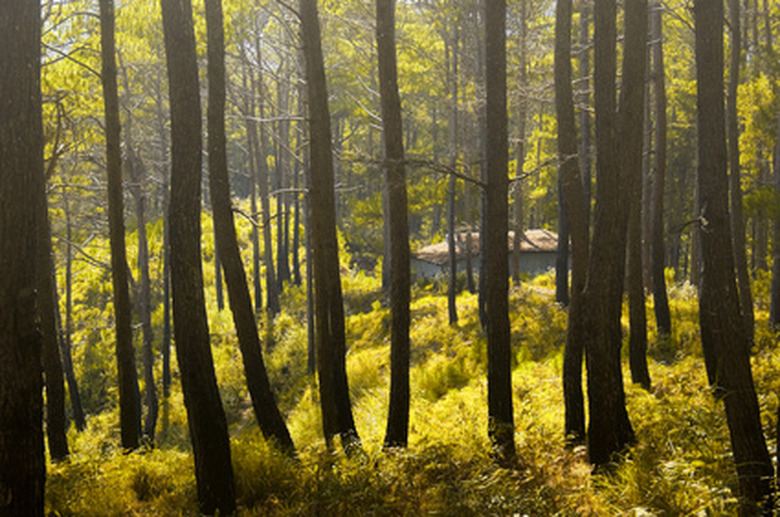Are Trees A Renewable Resource?
You don't have to look far and wide to find one of the earth's most readily renewable resources. The answer is as close as the nearest oak tree, or the desk in your study built of sturdy maple. Not only do trees provide us with shade and beauty, they also filter impurities out of the atmosphere and create much of the oxygen we breathe. More than any other natural resource, once depleted, a forest is easily renewed.
Why Trees Matter
If it weren't for trees, we wouldn't have newspapers, beds, firewood, houses, tables, chairs, books or the cases to store them in. Nor would we have porch swings, tires, cereal boxes, cosmetics, chewing gum, pencils, insulation or the barrels that wine ages in. In short, there isn't much in use today that doesn't have some species of tree to thank for its existence. The list is virtually endless, from foods that contain sap, cinnamon bark or lignan to the wood used to craft musical instruments. Through wise forest management, we can be assured of an endless supply of the materials that only trees can provide.
- You don't have to look far and wide to find one of the earth's most readily renewable resources.
The Renewal Process
Forests are renewed in several ways, including natural regeneration and methodical replanting. Left to their own devices, trees are capable of repopulating an area in a matter of years, as the seeds they drop germinate or new growth emerges from decaying stumps. Where the natural progression often renews a harvested or decimated area with species that are different from those that once grew there, planned replanting assures a steady supply of those trees most in demand. Indeed, management practices often make use of both methods, allowing some areas to renew themselves naturally while helping others by planting healthier stock or by using seeds harvested from desirable specimens.
Timber Management
Like most living things, trees have a definite life span, with some living for many years and others whose days are numbered due to storms, disease, fires or insect infestations. Harvesting as a forest management practice thins out the weak from the strong, removing sickly or deformed trees, creating more space for healthy ones, resulting in a productive woodland. Landowners who want to help the environment through forest management have the option of working with certified forestry professionals to create a plan that includes harvesting and replanting, sometimes realizing financial benefits in the process.
- Forests are renewed in several ways, including natural regeneration and methodical replanting.
- Left to their own devices, trees are capable of repopulating an area in a matter of years, as the seeds they drop germinate or new growth emerges from decaying stumps.
Best Practices
Several factors must be considered when deciding how trees in a particular area should be removed. Some newly planted seedlings won't grow in the shade of taller trees, making it necessary for loggers to remove all the older growth in that area. Known as even-age management, it is only one method whose use is arrived at by determining the types of trees being harvested, the character of the terrain, and the steps that will be necessary to replant the area. With no intervention, a logged area generally shows signs of regeneration within two years, as seedlings start to appear. The new forest will be visible within 10 to 15 years. If a select harvest is done at this time, the smaller trees that remain will grow quickly as they reap the benefits of the extra light and water.
